The Lie and How We Told it, by Tommi Parrish

Tommi Parrish’s figure-drawing alone says more about the complicated issues of having a body than most comics that take those issues as their primary subject-matter. Feed any human story through the language of Tommi’s figures and empathy is there waiting for you at the door.
For this reason, the nesting stories in The Lie and How We Told It are simple and direct. This allows the play with how the body is depicted to spool out unencumbered. The solidity of heads, hair, bodies, word balloons and identities is not guaranteed. Characters and their ideas of themselves go from solid forms to outlines and back again. This book is perfectly-titled and beautifully executed.
Mary, or Joan the Drone Pilot and Mary the Drone, by Lale Westvind

Lale Westvind’s are probably the most energetic and electrifying comics being made today—a sizzling bolt of thought gripped in a throbbing muscular arm of drawing. I see “Mary, or Joan the Drone Pilot and Mary the Drone,” as her mission statement, a crystallizing of her intentions.
In it, she adopts the kinetic pictorial languages of futurism and superhero comics, languages made for the willful glorification of war and violence, and accelerates them into an act of peaceful self-destruction. The comic dramatizes the struggle between consciousness and abdication to the power of “A.I. Governance War Mongers” in an instant the length of a thought. As a character in the last panel says, “You musta’ blinked cus you missed it!” Westvind shows us that fighting against these dark forces happens on this kind of time scale and that victory against war, against mindless repetition, against unconsciousness is possible and in fact is happening all the time. As the various human forms state on page eight, “I am an officer but I will defend my people from my master,” “I am a drone pilot, but I seek to have positive effect on the program by my steering,” and “I am the writer, scribe of dreams, and I’m writing now, for this dream to me.”
Ooof!
Showtime, by Antoine Cossé

Every one of the books I’m writing about here are examples of things I wish I could do with my comics or that I’ve tried to do and failed or that I hadn’t even thought were possible. Every time I open a book or comic by Antoine Cossé I swear out loud because his work is so efficient and effortless (looking). Even if his process does involve a lot of labor, as a recent TCJ interview reveals, what lands on the page is pure play in graphic form, all fun. No surprise then that he chooses to tell the story of a magician in Showtime. The story is simply-plotted with a couple twists and reveals, but the real pleasure is in the page by page drawing by drawing unfolding of an ever-shifting but always legible comics language.
Wet Earth, by Lala Albert

A lot of really bad and regressive tendencies in alternative comics get blamed or traced back to Fort Thunder. It’s a bummer to me that I see in contemporary discussions that ‘Fort Thunder’ is used as a shorthand for bro-ed out stoner humor or retro-macho video-game aesthetics. What I find really exciting about Wet Earth is that it carries forward the aspects of the Fort Thunder legacy I find most exciting: comics that explore (often wordlessly) a world, space or set of new natural laws with very little ‘Plot’ and tend to present this world in a deadpan manner—characters and creatures are harmed, succeed and transform with little fanfare. Some of my favorite Brinkman or CF comics play out like really disconcerting or mind-blowing nature documentaries and Wet Earth returned me to the pleasure of those reading experiences.
Wet Earth wouldn’t be such a pleasure if it didn’t feel as fresh and alive as that Providence stuff did to me more than a decade ago. Lala’s work shows me new ways to think sideways out of making boring comics. A great pleasure of this book is the way it functions as a sort of ambient comic. Since its method of telling is descriptive and observational one can drop in at any point and be fully immersed. A great book to have on the shelf to pull down and drop into every so often.
Salt Lick, by Lilli Carré

A lot of attempts at comics that are self-labelled as “Abstract” and/or “Poetic” result in work that is clearly trying to avoid the hard work of both comics and poetry. I don’t necessarily mean this in a derogatory way. This kind of work is often a good excuse to sort of ‘watch’ yourself read. But any kind of substantive or lasting impression beyond that is often missing (unless it’s funny or maybe beautifully drawn).
“Salt Lick” is a comic that gleefully takes on the hard work of both poetry and comics. The drawings sometimes coalesce into recognizable forms but often remain in a suspension between a mark or gesture and an image of something else. This kind of suspension isn’t difficult in the short-term—anyone can throw a ball in the air and let it fall to the ground. Carre succeeds in sustaining this suspension—she tosses gestural balls of drawing in the air and they stay in the air. She sometimes (to extend this ball-throwing metaphor to its breaking point) does this by a sort of juggling: comically putting disparate pieces of language and graphics together in a rhythmic sequence and sometimes (going from clown to magician) through an act of levitation where drawings and words float together and even start change places and functions.
What also makes this book so good is the way it emphasizes how the act of reading is a bodily act, that we read with memory stores of all of our senses, not just sight. For this reason a lot of the imagery seems erotic to me: hands, knees, bathing-suited butts, sweat drops, fingers, etc. This erotic energy doesn’t stay corporeal, it polar-shifts from body to mind faster than you can say “Piloerection.” This book is vigilantly playful and slippery and full of instruction and permission for anybody interested in pictures and/or words.


